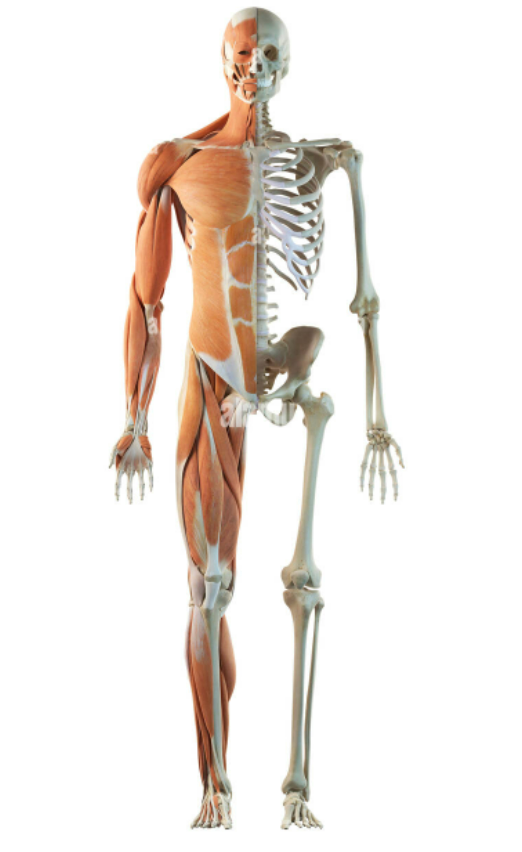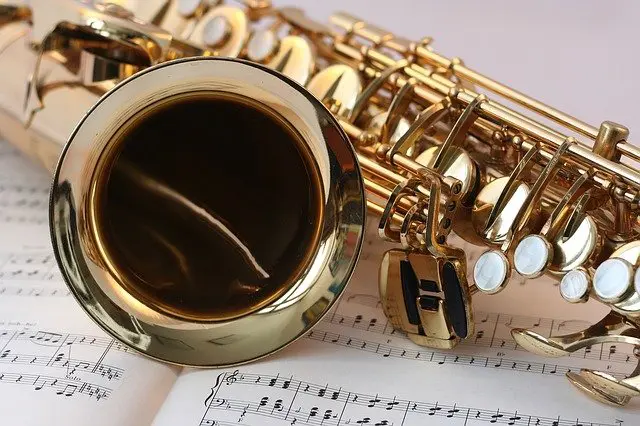Although the saxophone is a very popular instrument present in all musical genres worldwide, the effect of playing this woodwind instrument and potential saxophone health effects on the players’ body and mind has been largely understudied.
There’s a record of only one investigation done in 1999 where they analyzed the health effects of playing saxophone and other woodwind orchestral musicians, and even then, they mostly excluded musculoskeletal areas of concern even though it’s been acknowledged by sax pedagogues and performers that the orofacial area can be impacted.

Non-Musculoskeletal Health Problems
In the paper “Epidemiology of Saxophonists’ Occupational Health Problems” written by Michael Davis MM, Nabeel Zudhi MM, and Kris Chesky Ph.D. from the Texas Center for Performing Arts Health they include a table of non-musculoskeletal problems showing various mild and severe health issues that were reported by subjects of their study.
Sorted by severity, depression had the highest percentage of reported cases, with almost 18% of the subjects reporting to have had severe episodes and 31% of them had milder cases, but still present and it’s a concerning number overall and can be considered as a saxophone health risk.
With higher percentages, subjects reported other saxophone health issues such as having headaches and fatigue which can be caused by the exertion of playing the instrument, as well as mouth lesions, eye strain, and blackouts or dizziness.
Other saxophone health problems with various severity degrees include tinnitus, respiratory allergies, earaches, weight problems, and asthma. Also reported were high blood pressure, acquired dental malocclusion, noise-induced hearing loss and temporary hearing loss, heart conditions, and ulcers.

To explain some of these fewer known ailments, here are some definitions to better understand what they are and the impact they may have on a person’s life:
Tinnitus is when you experience ringing or other noises in one or both ears.
This noise isn’t caused by external sound and can’t be heard by others.
This condition is treatable and can improve by the reduction or masking the noise to make the condition less noticeable. For more information click here
Malocclusion (referring to acquired dental malocclusion) is a musculoskeletal problem that contributes to drooling and can negatively affect daily oral care.
Dental malocclusions result in abnormal contact of teeth with other teeth or soft tissue, which can cause periodontal bone loss, pulp necrosis, root resorption, and oronasal fistula. Click here for more information
Asthma is a disease that affects your lungs and it’s one of the most common long-term diseases in children, but adults can have it too.
Asthma causes wheezing, breathlessness, chest tightness, and coughing at night or early in the morning. For more information visit click here
The psychological and mental impact of playing the saxophone is also important.
We’ve already spoken about the depression levels, which is very concerning, but other issues include acute anxiety was reported by 47% of the subjects, stage fright, sleep disturbances, ADD and ADHD.
ADD is the term commonly used to describe a neurological condition with symptoms of inattention, distractibility, and poor working memory.
While ADHD is used to describe additional symptoms of hyperactivity and impulsivity.
Both are included in the medical diagnosis of attention deficit hyperactivity disorder.
These neurological conditions are diagnosed mostly in children and teenagers, but extreme stress can cause symptoms to mimic those of ADD or ADHD.
For more information click here
Musculoskeletal Problems
TMJ Syndrome
Among those concerning physical effects on saxophone health and safety some subjects reported suffering from TMJ Syndrome
or
temporomandibular joint syndrome which is a disorder of the jaw muscles and nerves caused by injury or inflammation to the temporomandibular joint or the connection between the jawbone and the skull.
Musculoskeletal pain
86.7% of the subjects reported feeling musculoskeletal pain focused mainly in 12 musculoskeletal sites that can be synthesized as front and back neck area, upper back, lower back, arm radius, hands, and lower mandible.
Lower lip pain
The intensity of pain was significant for the inside bottom lip, center bottom lip (also known as vermilion), and left mid-back.
Although the inside of the bottom lip was not the most prevalent location where saxophonists experience pain it had the greatest overall impact on playing.
Most of the other locations on and around the lower lip are also highly problematic because the lower lip is one of the areas of the face involved in the formation of the embouchure, the lips around the mouthpiece and reed that controls the energy transfer of the saxophonist’s air from their body to the instrument.
The lower lip rests on the bottom teeth and saxophonists “bite” into the lower lip to varying degrees depending on many factors ranging from the type of music they play to the equipment they use, to how they practice, to how they were taught to form an embouchure.
A common solution is to use a “tooth guard” to serve as a cushion between the bottom teeth and the lower lip.
Statistical significance was found for the center cutaneous lower lip. An independent sample t-test was used to determine the statistical significance of the differences in frequency, intensity, and influence.
Statistical significance was found for the influence of pain on playing at the inside bottom lip and for the intensity of pain and influence of pain on playing at the center bottom lip (vermilion).
Spine pain
To prevent damage and pain on the spine, sax players can use neck-straps to carry the weight of the instrument. A saxophone neck strap is like a belt that supports the saxophone securely in position so you can play more comfortably.
There are different types of saxophone straps depending on your needs and preferences, such as basic neck-straps, over-the-shoulder straps, harness straps, as well as different kinds of hooks and clasps.
Besides supporting the sax, neck-straps are used to prevent placing extra weight on your neck and spine which could lead to a lot of pain and possible long-term issues with your column.
Basic neck-straps can put a lot of pressure on your spine and press the sides of your neck restricting the blood flow to your brain.
A saxophone weighs around 30 pounds, so hanging it with a thin strap supported by your neck may not be the best idea for your health.
If you are using a basic neck strap, beware of signs of restricted blood flow and if you experience any symptoms get a different one.
A saxophone harness is overall the best option available because it distributes the weight of the instruments on the shoulders and the abdominal muscles.
This type of saxophone strap makes it comfortable to play all night long with minimal fatigue no matter if you are standing or sitting down.
If you’d like some help choosing a neck-strap or a harness check out our article from here
Music Performance Anxiety
Music performance anxiety, or MPA, has been defined by Kenny DT in “The role of negative emotions in performance anxiety”
Performing publicly can be a psychophysiological demanding activity for many musicians that can be higher before and during a public performance, compared to a private performance without an audience.
Not all musicians have the same predisposition when it comes to performing publicly, and this is not a response to their skills and abilities; some may thrive in front of an audience while others fail.
During the interviews and evaluations about saxophone and health, 58.13% of the subjects reported having experienced music performance anxiety in the past year and not on a few occasions, but as a frequent occurrence.
This can be viewed from two different points: it can be a strong positive influence because it drives them to improve and practice to gain more skills, but it can also be considered a strong negative influence on the stress it causes to the mind and body of a person.
There are many sequels to suffering anxiety that can negatively impact a person’s mental health severely.

Music performance anxiety can affect, either positively or negatively, cognitive musical aspects such as musicality and memory which are key factors for performing, especially during musical presentations or concerts.
Nonmusical cognitive aspects that can also be affected include motivation, mental sabotage, focus, fear, and awareness, and these situations, although not necessarily related to musical performance, do impact the way the sax players present themselves because they may hinder their results.
MPA can also alter a saxophonist’s tone, tempo, technique, and intonation and leave the player fighting with tension, and dealing with sweaty hands, nausea, and dry mouth.
They can also have issues with their posture, breathing, and control of the whole situation.
So, many players can deal with this in a way that doesn’t really affect them and their performances, but an anxiety-riddled person is in the right headspace to offer an audience their best and showcase the real skills they have.
A person can be the best sax player with superb skills, but anxiety can sabotage them and leave them feeling like amateurs and questioning themselves severely.
While the literature suggests that biopsychosocial factors are interrelated, another limitation is that performance anxiety is often measured using scales that assess only negative symptoms and experiences.
This perspective is challenging to the music disciplines because research and anecdotal evidence supports the idea that stress is critical to success and that performance anxiety can facilitate performance for some musicians.

Conclusion
Supporting concerns expressed by saxophone pedagogues and players, the inside of the bottom lip was identified as one of the most critical areas of concern due to the high prevalence, frequency, and intensity of pain in this area.
More than any other musculoskeletal site, pain in this area was reported as having the strongest negative influence on the ability to perform the saxophone.
Further research in this area should include an assessment of the influence of pain on playing as prevalence alone does not correlate with a high influence on performance.
Is it unhealthy to play the saxophone? To answer such a question, further investigation would be recommended to compare results and come to an objective conclusion.
Up until now, and with the information at hand, there are pros and cons to playing the sax, as with everything in life.

